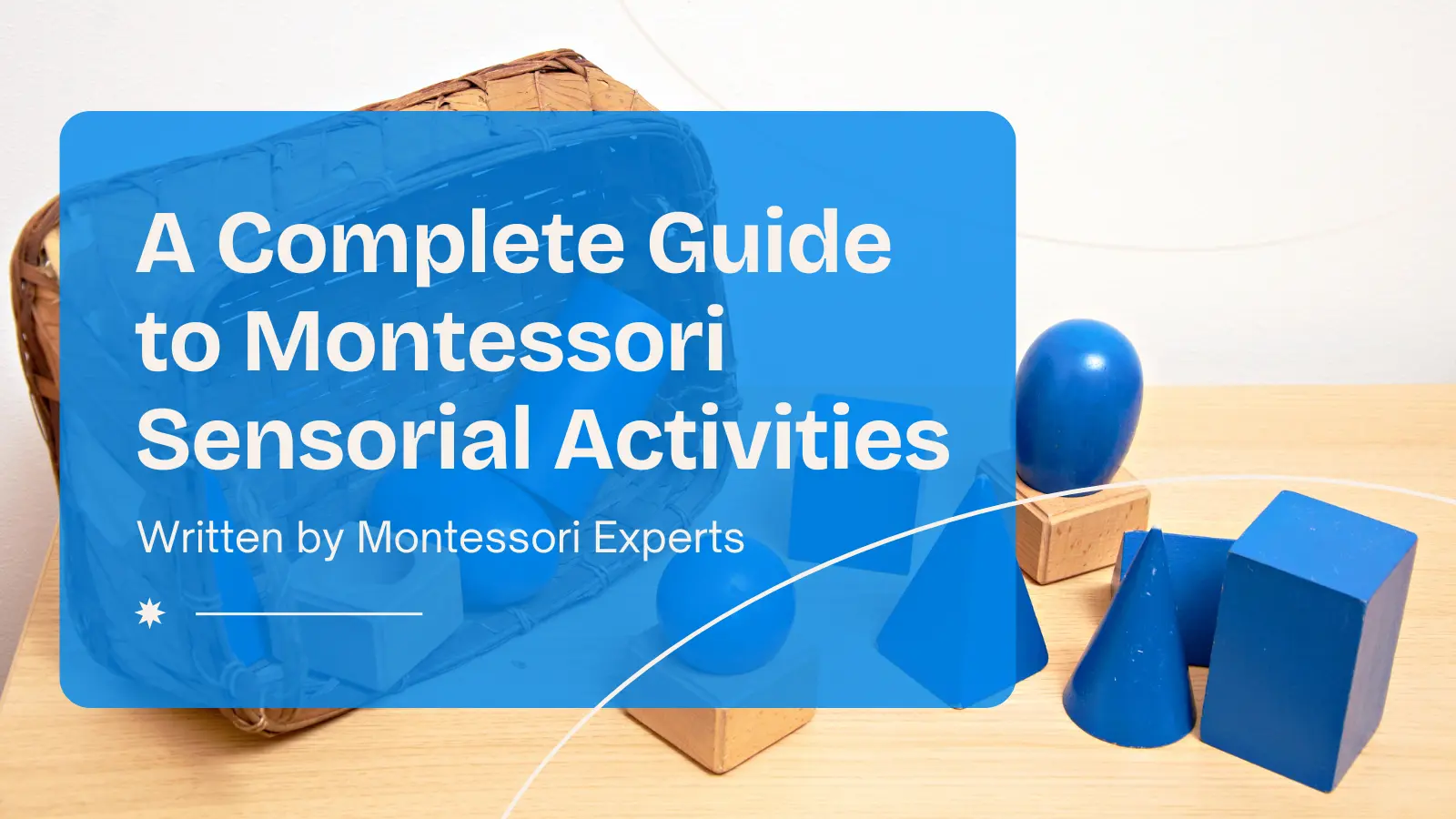Blog
A Complete Guide on Montessori Sensorial Materials

Montessori education emphasizes the importance of sensory experiences in a child’s learning process. Sensorial materials are fundamental in this educational approach, allowing children to explore and understand the world through their senses. This complete guide will delve into the various Montessori sensorial materials and their role in enhancing sensory development.
Understanding Montessori Sensorial Materials
What Are Sensorial Materials?
Sensorial materials are specially designed educational tools used in Montessori classrooms to help children develop and refine their senses. These materials target different senses—sight, sound, touch, taste, stereognostic and smell—and help children classify and differentiate between various sensory inputs.
Importance of Sensory Development
Sensory development is crucial in the early years of a child’s life. By engaging with sensorial materials, children enhance their cognitive abilities, improve their focus, and develop critical thinking skills. Montessori sensorial materials encourage active exploration, which is fundamental to learning and understanding the environment.

Types of Montessori Sensorial Materials
Visual Materials
Visual materials in Montessori education are designed to refine a child’s sense of sight. Some of the visual sensory materials include:
- Color Tablets: These tablets help children recognize and differentiate colors and shades.
- Geometric Solids: These are three-dimensional shapes that help children understand form and space.
- Pink Tower: A series of graduated cubes that teach size differentiation and spatial awareness.
Auditory Materials
Auditory materials focus on enhancing a child’s sense of hearing. Some examples of auditory sensory materials include:
- Sound Cylinders: These are pairs of cylinders filled with different materials to produce distinct sounds, helping children develop auditory discrimination.
- Bells: Used for musical education, the bells help children understand pitch and tone.
Tactile Materials
Tactile materials are designed to refine the sense of touch. Examples include:
- Touch Boards and Tablets: These materials help children distinguish between different textures.
- Fabric Box: A collection of different fabrics that children can feel and compare.
Olfactory and Gustatory Materials
While less common, olfactory and gustatory materials are also part of the Montessori sensorial experience:
- Smelling Jars: Containers filled with different scents that help children develop their sense of smell.
- Tasting Bottles: These bottles contain various flavors, allowing children to explore their sense of taste.
Stereognostic Materials
Stereognostic sense is the ability to identify the shape and form of a three-dimensional object and, therefore, its identity with tactile manipulation of that object in the absence of visual and auditory stimuli. Some examples of this includes:
- Geometric Solids: Has various 3-dimensional shapes like sphere, pyramid, cube, prism etc.
- Stereognostic Bags: Various bags with 3-dimensional objects. The child close their eyes and sort, match or grade these objects.
Shop the Complete List of Montessori Sensorial Materials for Montessori School and Home

How Sensorial Materials Enhance Learning
Development of Cognitive Skills
Sensorial materials help children develop cognitive skills by encouraging them to observe, compare, and contrast various sensory inputs. This process enhances their ability to make connections and understand relationships between different concepts.
Promoting Focus and Concentration
By engaging with sensorial materials, children learn to concentrate on specific tasks. This focus is crucial for academic success and helps children develop self-discipline.
Encouraging Independence
Montessori sensorial materials are designed to be self-correcting, allowing children to work independently. This independence fosters self-confidence and encourages a love for learning.
Facilitating Language Development
As children engage with sensorial materials, they learn to describe their experiences, which aids in language development. They acquire new vocabulary related to colors, shapes, sounds, and textures.
Integrating Sensorial Materials at Home
Creating a Montessori Environment
To integrate Montessori sensory materials at home, create a learning environment that encourages exploration and independence. Choose a quiet, clutter-free space where your child can focus on their activities.
Choosing the Right Materials
Select materials that align with your child’s developmental stage and interests. Start with basic materials like color tablets and sound cylinders, and gradually introduce more complex tools as your child progresses.
Encouraging Exploration
Allow your child to explore sensorial materials at their own pace. Encourage them to ask questions and describe their experiences, fostering a deeper understanding of the world around them.
Conclusion
Montessori sensory materials play a vital role in a child’s sensory development. By engaging with these materials, children enhance their cognitive abilities, improve their focus, and develop critical thinking skills. Whether in a classroom or at home, these materials provide a foundation for lifelong learning and exploration. Embrace the Montessori approach and watch your child thrive in a sensory-rich environment.
